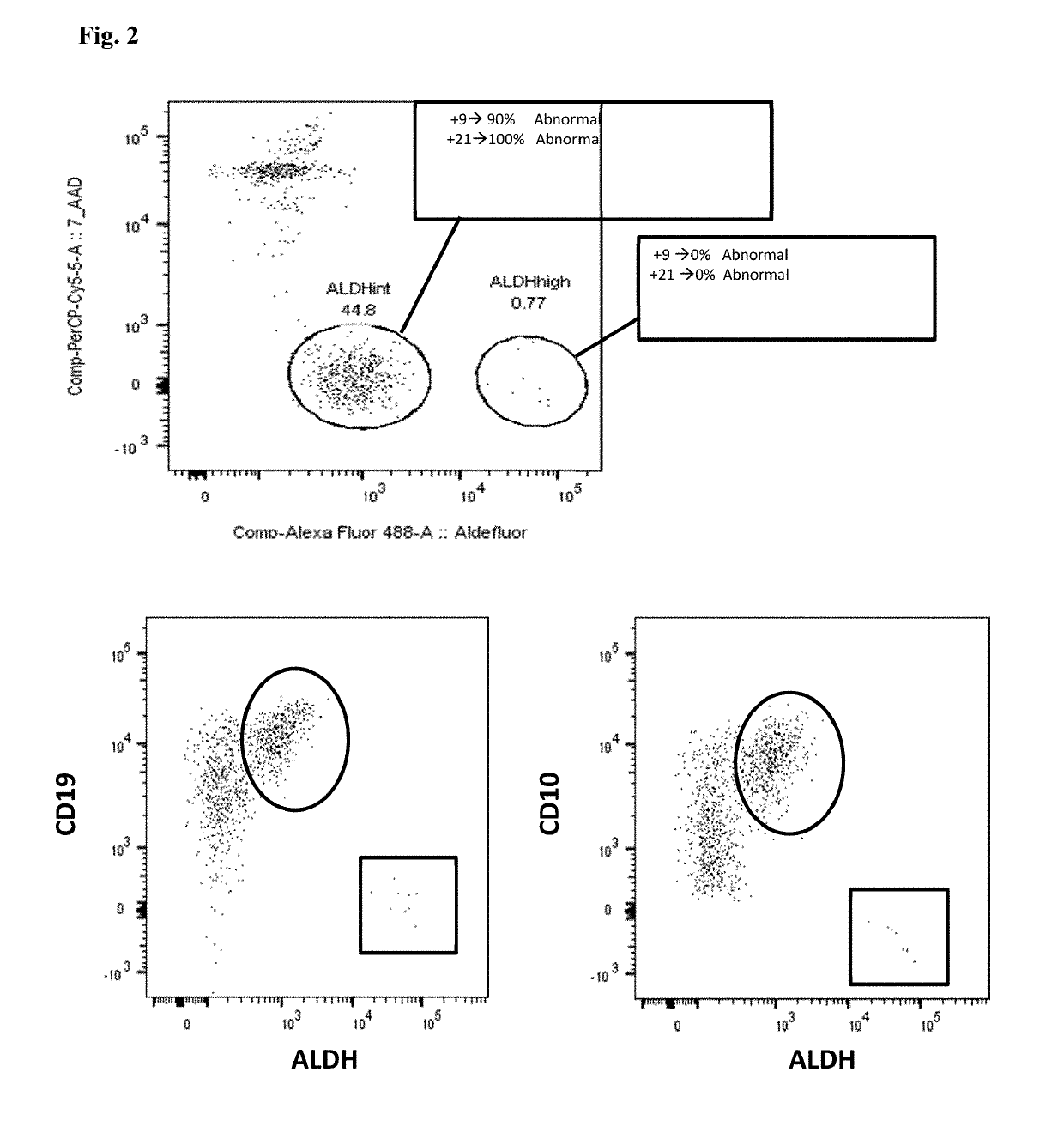Methods and compositions for identifying leukemic stem cells
a technology of stem cells and compositions, applied in the field of methods and compositions for identifying leukemic stem cells, can solve the problems of difficult identification of acute lymphocytic leukemia (all) and ineffectiveness of existing therapies, which are highly active against the leukemic bulk, and achieve high aldh activity. , the effect of high level of aldh activity
- Summary
- Abstract
- Description
- Claims
- Application Information
AI Technical Summary
Benefits of technology
Problems solved by technology
Method used
Image
Examples
example 1
Identification of a Putative Leukemia Stem Cell Population in Acute Lymphocytic Leukemia (ALL) and Distinguishing Philadelphia Chromosome-Positive ALL from Lymphoid Blast Crisis Chronic Myeloid Leukemia (LBC CML)
[0103]Introduction. The identification of LSCs in acute lymphocytic leukemia (ALL) has proved challenging, as transplantation studies in immunocompromised mice have yielded conflicting results. The distinction between Philadelphia chromosome-positive (Ph+) ALL and lymphoid blast crisis (LBC) chronic myeloid leukemia (CML) is also controversial.
[0104]Methods. Bone marrow and / or peripheral blood specimens were collected at diagnosis from patients with B cell ALL or LBC CML on an IRB-approved protocol. A total of 7 patients was evaluated: 2 Ph− ALL, 2 Ph+ALL, and 3 LBC CML patients. CD34+ cells were isolated by magnetic bead and column selection and then analyzed by flow cytometry with respect to CD38 expression and ALDH activity. Sorted cell populations were analyzed by fluore...
example 2
[0107]Introduction. The identification of LSCs in acute lymphocytic leukemia (ALL) has proved challenging, as transplantation studies in immunocompromised mice have yielded conflicting results. The distinction between Philadelphia chromosome-positive (Ph+) ALL and lymphoid blast crisis (LBC) chronic myeloid leukemia (CML) is also controversial.
[0108]Methods. Bone marrow and / or peripheral blood specimens were collected from normal donors and from patients with ALL or LBC CML on an IRB-approved protocol. A total of 22 patients was evaluated at diagnosis or relapse: 8 Ph− B-cell ALL, 8 Ph+ ALL, 1 T-cell ALL, and 5 LBC CML patients. Additional patients were evaluated while in remission after therapy. CD34+ cells were isolated by magnetic bead and column selection. Samples were analyzed by flow cytometry with respect to CD34, CD38, CD19, and CD10 expression, as well as ALDH activity. Sorted cell populations were analyzed by fluorescence in situ hybridization (FISH) for leukemia-specific ...
PUM
 Login to View More
Login to View More Abstract
Description
Claims
Application Information
 Login to View More
Login to View More - R&D
- Intellectual Property
- Life Sciences
- Materials
- Tech Scout
- Unparalleled Data Quality
- Higher Quality Content
- 60% Fewer Hallucinations
Browse by: Latest US Patents, China's latest patents, Technical Efficacy Thesaurus, Application Domain, Technology Topic, Popular Technical Reports.
© 2025 PatSnap. All rights reserved.Legal|Privacy policy|Modern Slavery Act Transparency Statement|Sitemap|About US| Contact US: help@patsnap.com



